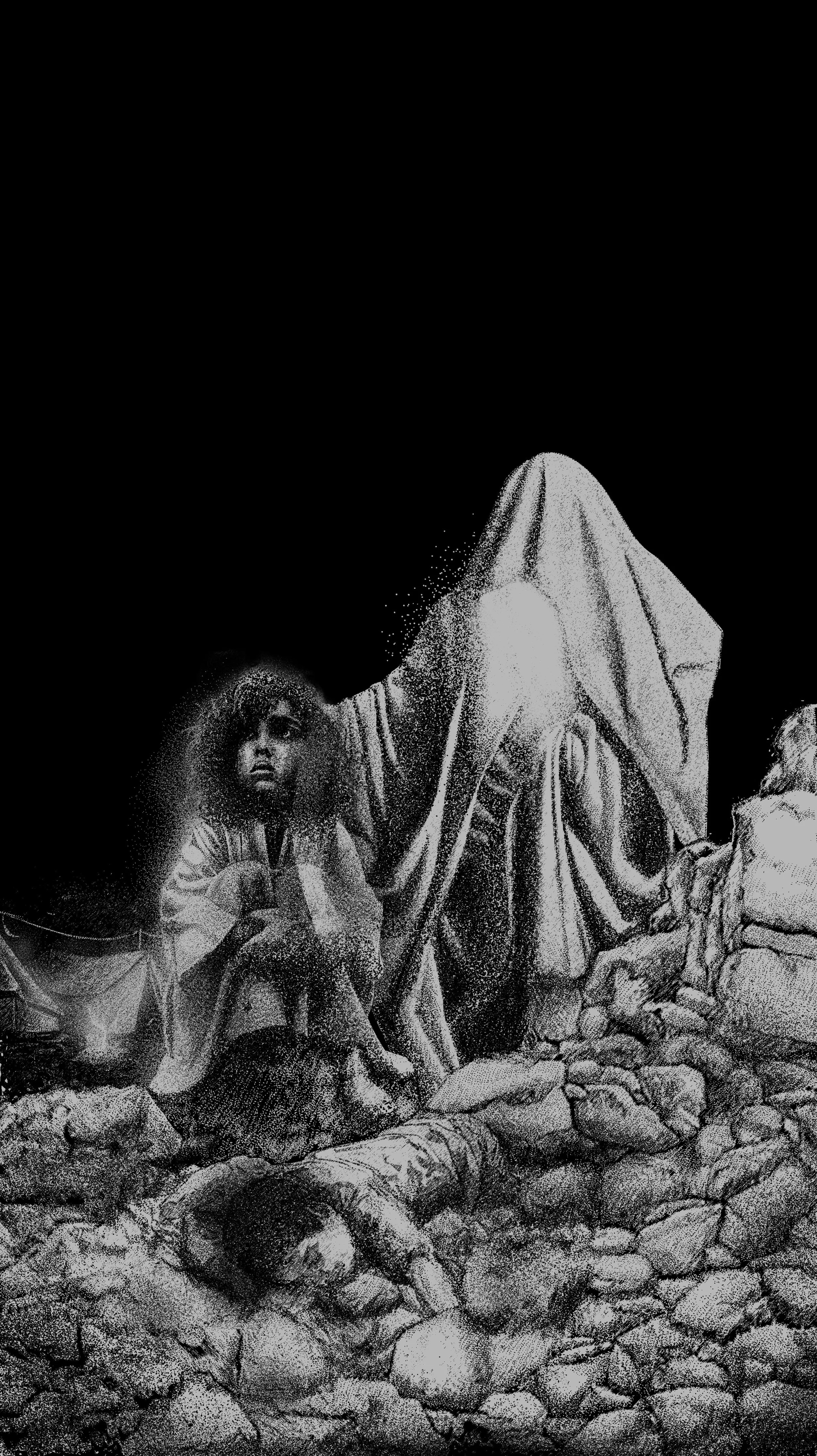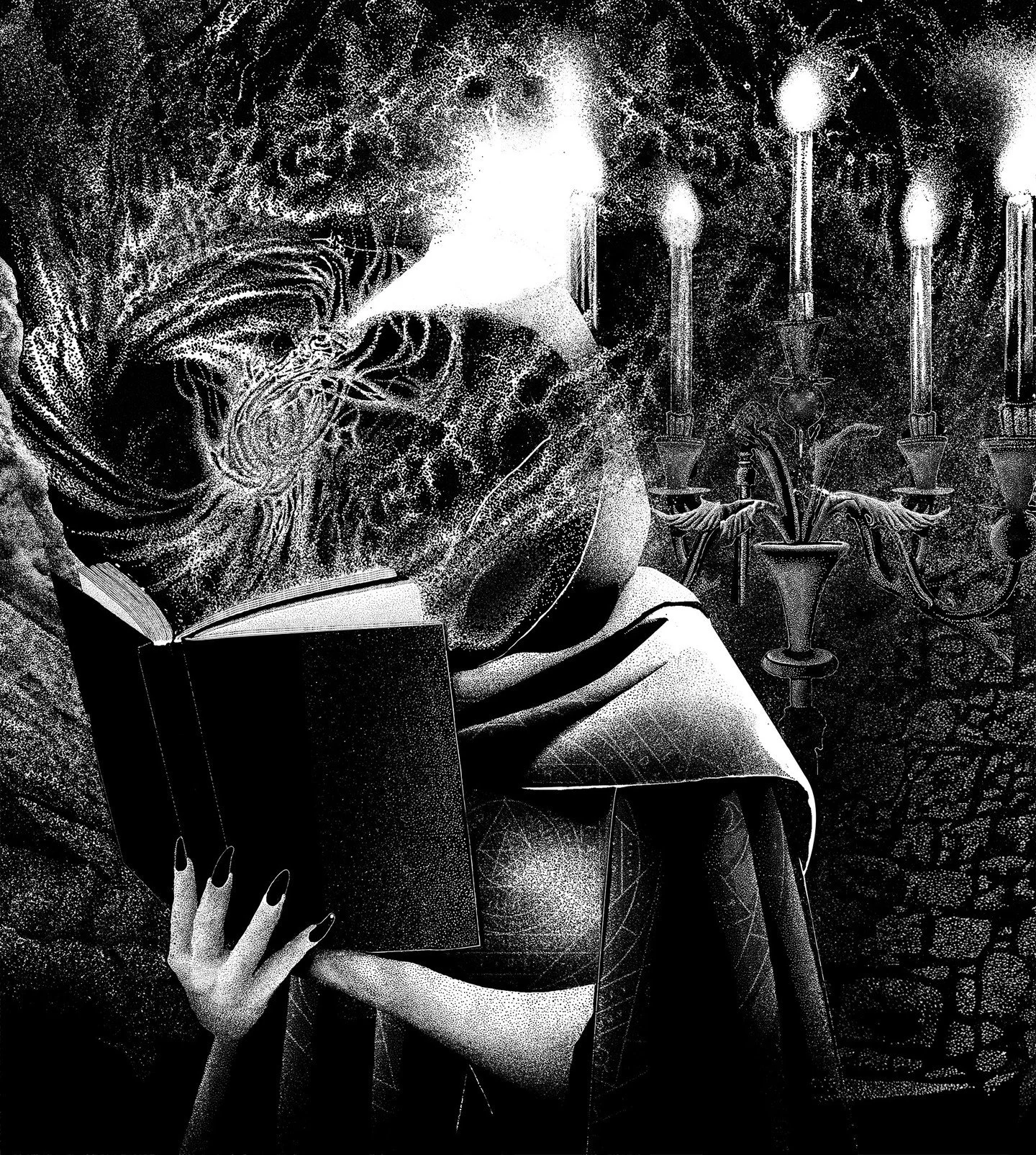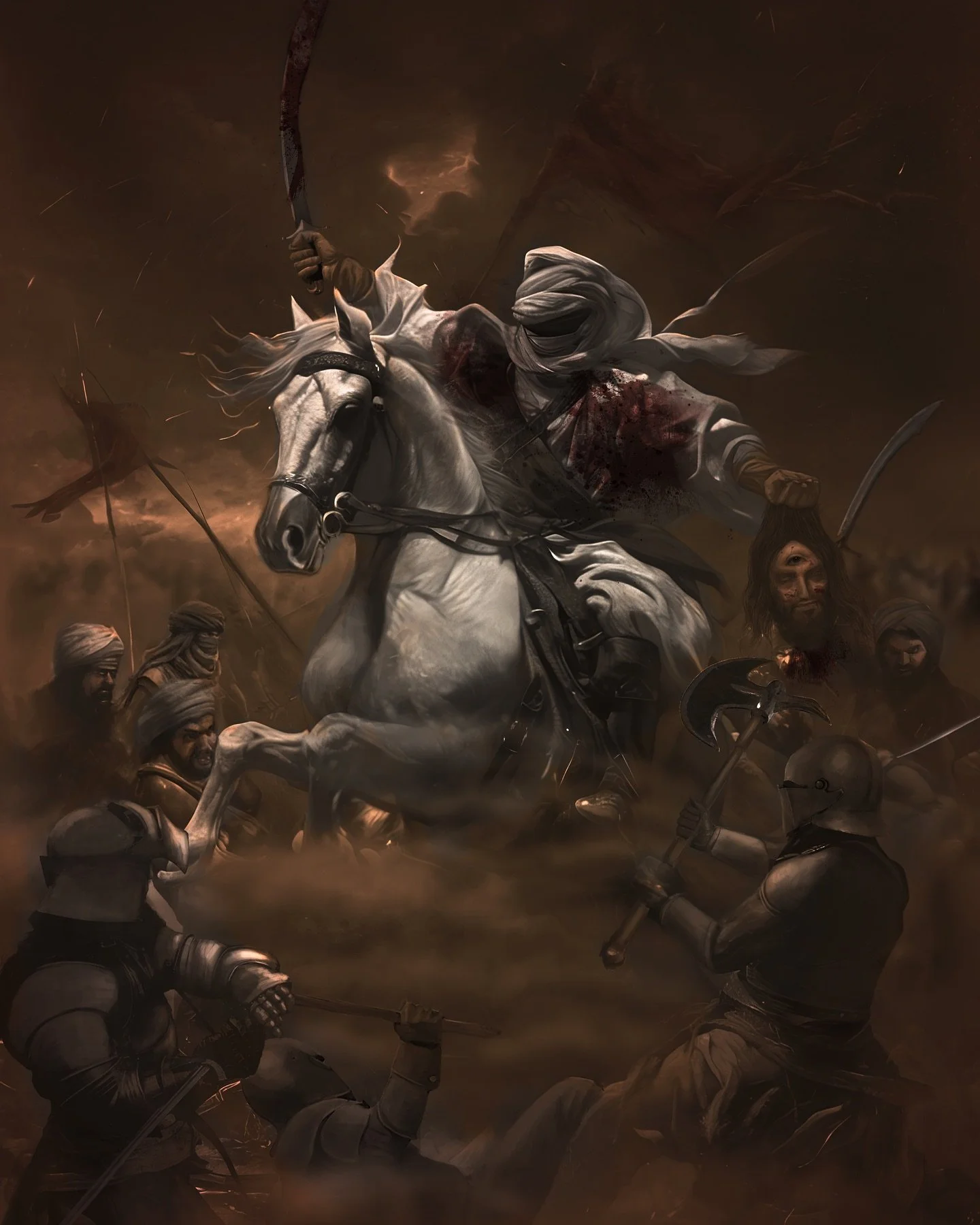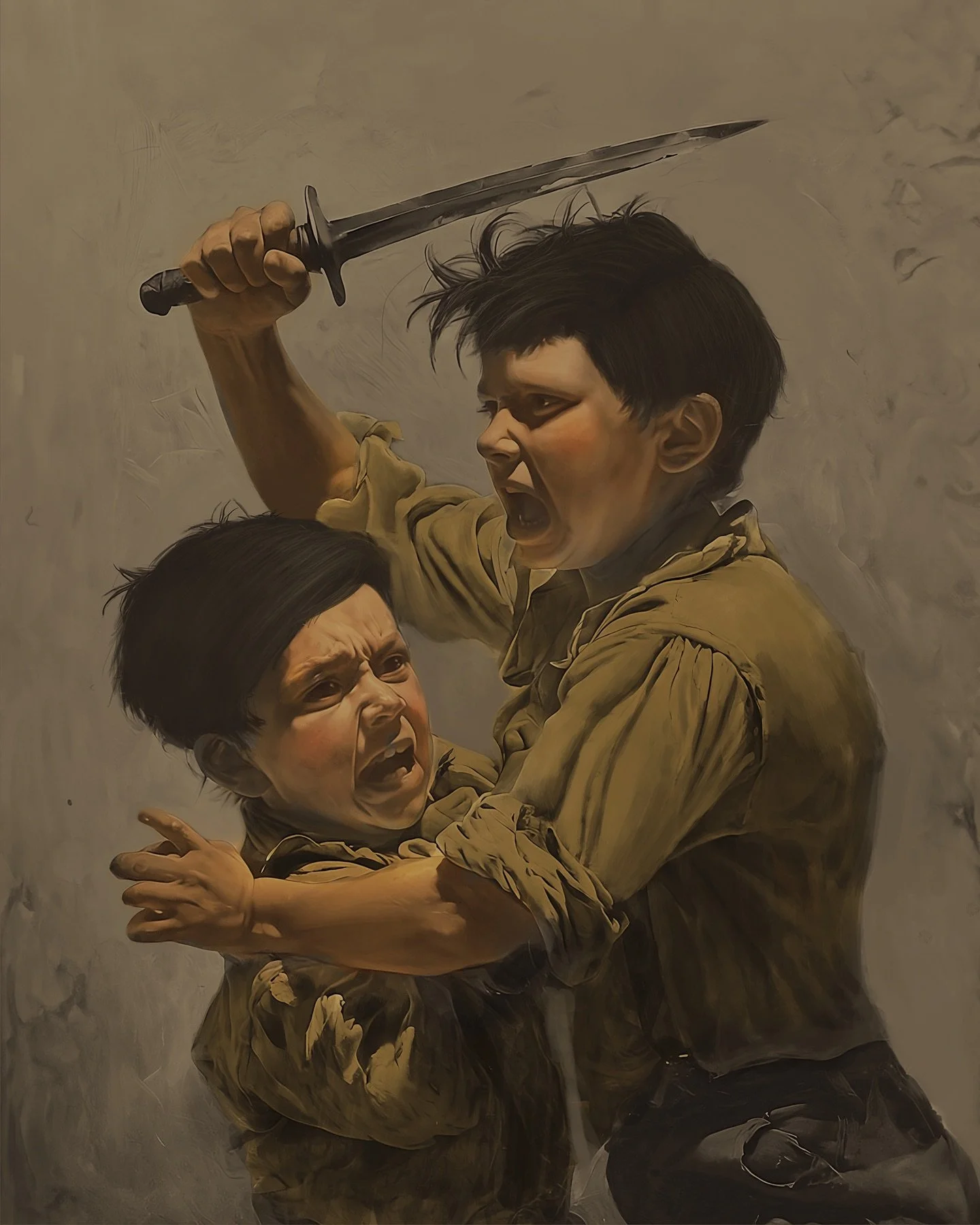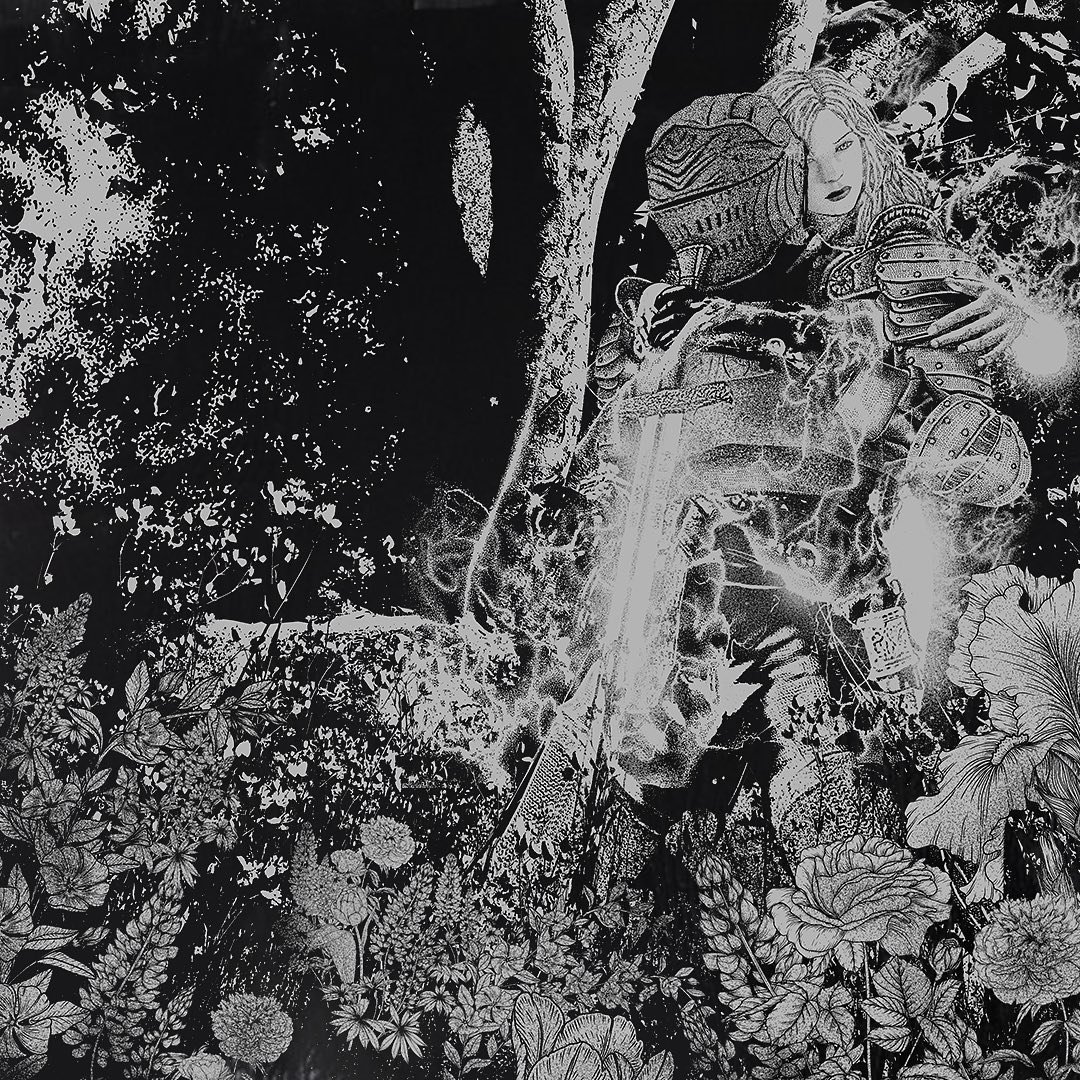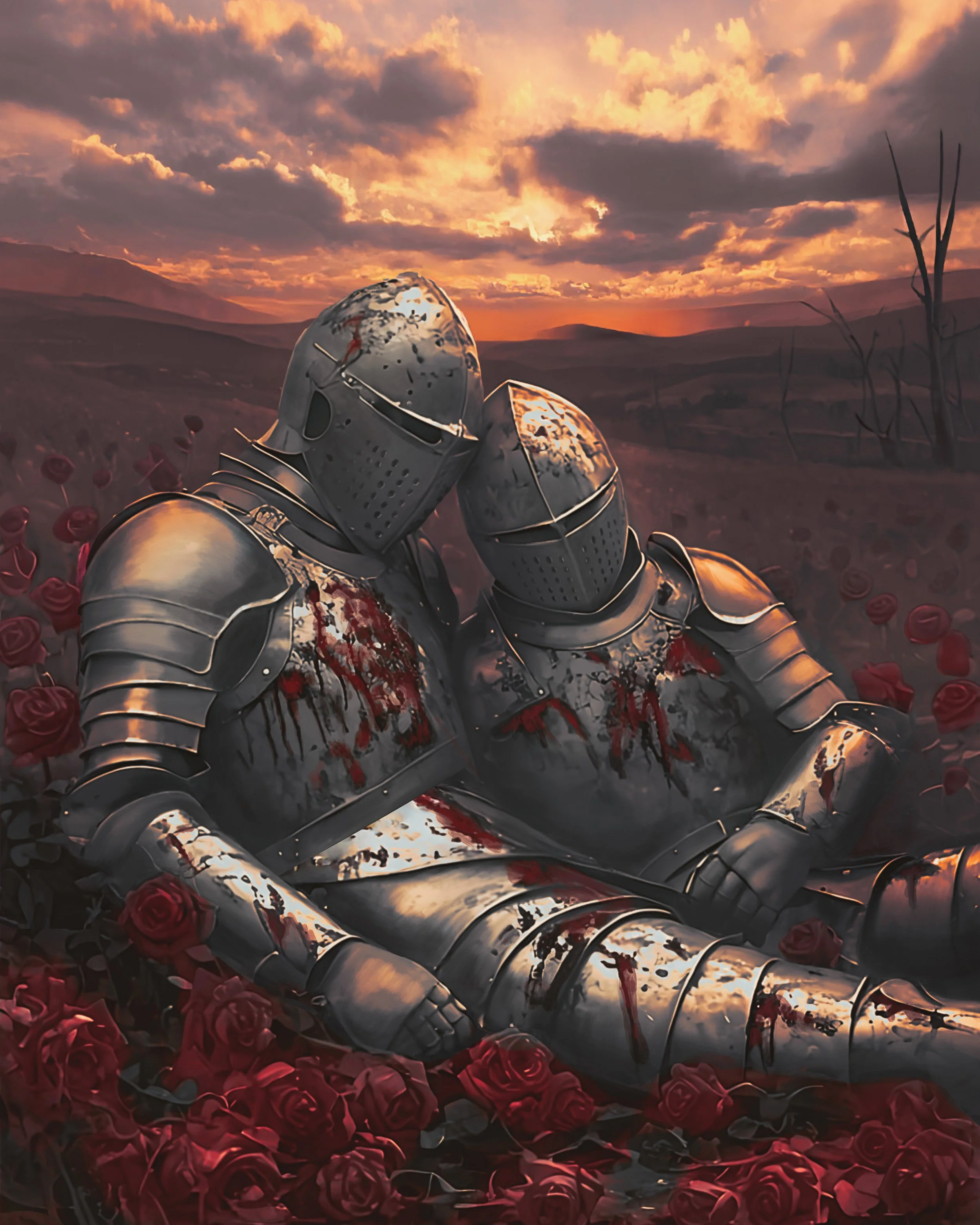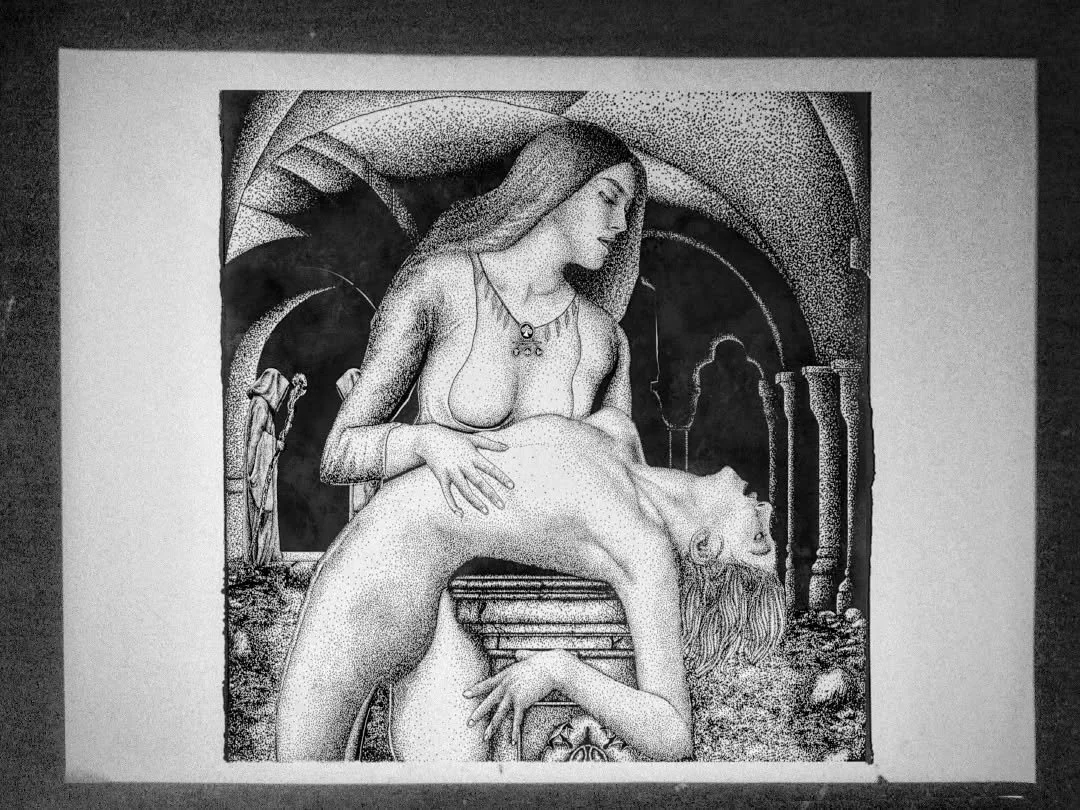“Beauty in What Others Call Decay”: Monorthern on Drawing What We Turn Away From
As a professional illustrator with seven years of experience, Monorthern specializes in creating captivating artwork for music albums, book covers, t-shirts, and custom product illustrations. His work is shaped by a love for black-and-white drawing, especially using stippling techniques, and often explores themes of death, myth, nature, loneliness, and sadness. Though he began with ink on paper, in 2023 he started experimenting with digital art, drawn in by curiosity and a desire for a more efficient workflow. Digital tools offered new possibilities without compromising the soul of his process.
Inspired by the mysterious and the unseen, Monorthern’s art is deeply influenced by medieval folklore, forgotten myths, and the quiet darkness of the natural world. He’s fascinated by how beauty and decay coexist, and often illustrates the raw emotions many people shy away from. Drawing from the symbolic richness of artists like Gustave Doré, he blends elegance and eeriness in a way that invites reflection on the sacred, the strange, and the stories we carry in silence.
We asked Monorthern about his art, creative process, and inspirations.
Can you tell us about your background as a digital artist? How did you get started in this field?
I started diving into the world of digital art in early 2023. It all began with a sense of curiosity as I wanted to experience what it felt like to draw using a pen tablet. Before that I was used to drawing manually on paper and honestly there is a certain satisfaction that comes with it, the texture, the smell of the paper, the slow meditative process of building details by hand. But over time I started seeking a more practical approach. Digital drawing brought efficiency, no more scanning, no more stacks of hardcopy to store. Everything became more streamlined without losing the soul of the creative process.
What inspires your art? Are there any particular themes or subjects that you enjoy exploring through your artwork?
I am drawn to the unknown. My art is often inspired by themes of death, myth, and nature, three elements that I feel are deeply connected in mysterious ways. I find beauty in decay, in forgotten folklore, and in the silence of the forest. Through my work, I enjoy exploring the thin line between the visible and the unseen, the sacred and the terrifying. For me, illustrating what people often turn away from is not about being dark for the sake of darkness, but about honesty, vulnerability, and how nature reflects the human soul in its rawest form.
Are there any myths or folklore stories that have stayed with you or inspired specific pieces?
My paintings are deeply inspired by medieval folklore and the mystical golden age where myth, belief, and imagination intertwined in hauntingly beautiful ways. I’m especially drawn to the atmosphere of that era—a time when stories were dark, symbolic, and larger than life. My visual language is heavily influenced by painters from that period, particularly artists like Gustave Doré, whose dramatic and intricate works captured both the terror and beauty of myth and legend. Their ability to blend darkness with elegance continues to shape my creative direction to this day.
You’ve created artwork for bands and album covers — how does music influence your visual world?
Honestly, music plays a huge role in shaping the way I draw. It helps me tap into the emotion and atmosphere I want to bring to the artwork. When I’m illustrating I try to fully immerse myself in the world I’m creating and music acts as a bridge to that world. For example if I’m working on a piece that depicts a battlefield or a war torn landscape I’ll listen to music that carries the same mood or intensity. It’s not just background noise it’s part of the process. The rhythm the energy even the silence between notes all of it helps guide my hand and deepen the emotion behind each line.
Much of your work is black and white ink — what draws you to that stripped-back palette?
I’m drawn to black and white because it feels the most honest. Life itself is often lived in shades of gray, but at its core, we constantly move between contrasts—light and shadow, presence and absence, joy and grief. Working in black and white strips everything down to its essence. There’s no distraction, only raw emotion and form. It reflects how I see the world, where beauty often lies in silence, and meaning emerges through contrast. It’s a quiet rebellion, a way to say more with less.
Can you tell us about some of your favorite pieces? What makes them special to you?
There are a few projects that really mean a lot to me. One of them was creating artwork for a WWE wrestler’s entrance, shout out to Malakai Black. WWE was such a big part of my childhood, so I honestly never thought I’d end up working on something like that. It felt surreal. I’ve also worked with a few bands whose music I genuinely love, like Mitski, Koil, Bosse de Nage, and many more. Getting to collaborate with artists I admire is one of the most fulfilling parts of being an illustrator.
What is a profound childhood memory?
A profound childhood memory that stays with me is the first time I saw a dead bird in front of our house. I was just a kid maybe six or seven and I remember standing there staring at it for a long time. It wasn’t scary it was quiet. Peaceful even. That moment made me think about silence about endings and how fragile everything is. I didn’t have the words for it back then but something shifted inside me. I think that was the first time I started to see beauty in what others might call sadness or decay. And maybe without realizing it that was the beginning of the kind of art I make now.
What is a fun fact about you?
A fun fact about me is that I first learned anatomy from an old medical anatomy book I found being sold on the side of the street. It was thick, worn out, and filled with detailed illustrations of human organs, definitely not meant for artists, but that’s exactly what drew me in. That book taught me how the human body works, and anatomy has been a core part of my drawing style ever since.
What else fills your time when you’re not creating art?
When I’m not creating art, I often spend my time playing soulslike games like Dark Souls or Elden Ring, not just for fun, but to find visual and atmospheric inspiration for my work. I also enjoy deep conversations with my partner, Kartika Boni, who has always been a huge supporter of my creative journey. Shout out to her. I like to read books about mysticism and the occult as well, which constantly fuel my imagination and help me build the visual worlds I create.


